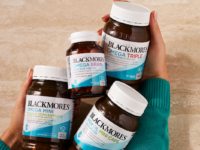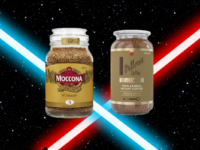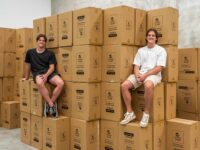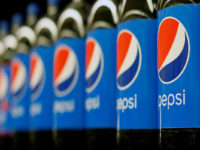
Finding the world’s most sustainable packaging solution is a tough call, but this is one challenge Kate Bezar, co-director of The Better Packaging Co., is happy to take on.
Inside FMCG interviewed Bezar on building the eco-friendly company, sourcing the most eco-friendly raw material and the issue of disposal.
The sustainable packaging company created two ranges of revolutionary products – from comPOST Pack (comPOLY BAGS and comPOST Packs) and Opacks.
The comPOST Pack is made from corn starch and binding agent or resin, which can be disposed with food scraps and garden waste. It will decompost in 90 days and become food for plants.
Opacks is made from limestone quarry waste that is supposed to be sent to landfills. The packs are also waterproof, antibacterial and photodegradable. Though it takes years to process, it is feasible with using renewable solar power, no water, acid or bleaches.
The Better Packaging Co. now collaborates with major brands, such as L’Oreal, Garnier, Maybelline and WelleCo.
Inside FMCG: Tell us how you started The Better Packaging Co.?
Bezar: First we did a heap of research, sampling, testing and then more research, sampling and testing as inevitably some of the materials we found didn’t work or their eco-credentials didn’t check out.
We actually thought our primary business was going to be making packaging for other companies, but decided to do a production run of our home compostable courier bags, brand them ourselves and sell them online – just to test the market.
We sold out within two weeks and that was when we knew we were really onto something.
Inside FMCG: The SheEO grant news is very exciting, how will you steer the business given the five-year loan?
The SheEO grant is fantastic and the money will be well-used to fund our rapid expansion, but what we’re most excited about is the whole programme we will go through as a SheEO Venture.
It includes mentoring, coaching and access to an incredible network of ‘radically generous’ women.
Inside FMCG: How did you tap FMCG brands such as L’Oreal and WelleCo? Any other brands you’ll be working in the future in the sector?
We’ve done very little direct marketing or sales. Almost all our customers have come to us, including the Maybelline, L’Oreal [and] Garnier group. One of the cool things (and there are many!) about our products is that each one is like a flyer going out into the world telling people about itself and our company.
Companies are desperate for valid, trusted solutions and we’re in an incredible position to be able to provide them.
Inside FMCG: Is it more expensive to create environmentally friendly packaging than producing plastic packaging?
When you factor in the environmental cost of plastic, it’s cheap! But I think you’re asking about the monetary cost… and yes, it does cost a little more, but not a lot, and the PR or goodwill companies get in return more than makes up for it!

Inside FMCG: What are most popular products made at The Better Packaging Co.?
By far our most popular products are our home compostable courier satchels aka ‘Real Dirt Bags’. They are a direct substitute for a traditional plastic satchel – just as tough, waterproof and durable – but will be gone in 90 days in a home compost.
Inside FMCG: How can you convince your consumers to switch to more sustainable goods if most think they’re more expensive?
Personally, I think it’s imperative for businesses to make whatever they produce as sustainably as possible and if it costs more, it costs more. The UN Minister for the Environment has just said we have just 12 years before the damage from climate change is irreversible.
We need to dramatically rethink how we produce and consume. If things cost a little more and that makes people think twice before buying something, call me a greenie, but that would not necessarily be a bad thing!
Inside FMCG: How do you see the environment and the FMCG industry 10 years from now with the current zero-waste movement?
I think the revolution in this area will be in refillable products. It is the only real way to reduce the huge amounts of waste associated with FMCG packaging. Supermarkets become refilleries for everything from shampoo to toothpaste [and] whole-peeled tomatoes to milk. There are brands starting to do it, but not at any real scale yet.
Inside FMCG: How did The Better Packaging Co. expand from ANZ to the US and Europe?
Through customer demand. We made our products available for customers all over the world to order online and fulfilled their orders from ANZ until we’d built up enough demand to justify setting up warehousing and distribution in another location.
Sometimes it was also driven by one large ‘corporate’ customer who needed stock close to their fulfilment centres.
Inside FMCG: Is it difficult to have certifications approved in the EU?
It is a process, yes, but the most stringent certification – and therefore the hardest to achieve – is actually the Australian one for Home Compostability (AS 5810). It is the only [certification] that includes a worm toxicity test. We think this is crucial, so you’ll find our products carry this [certification] as well as the European ones.
Inside FMCG: Tell us about your advocacy to support diversity and inclusion in the workplace as well as supporting local and indigenous groups.
We’re still a relatively small team as we outsource anything ‘non-core’, however we pride ourselves on having an open and inclusive approach to hiring.
















